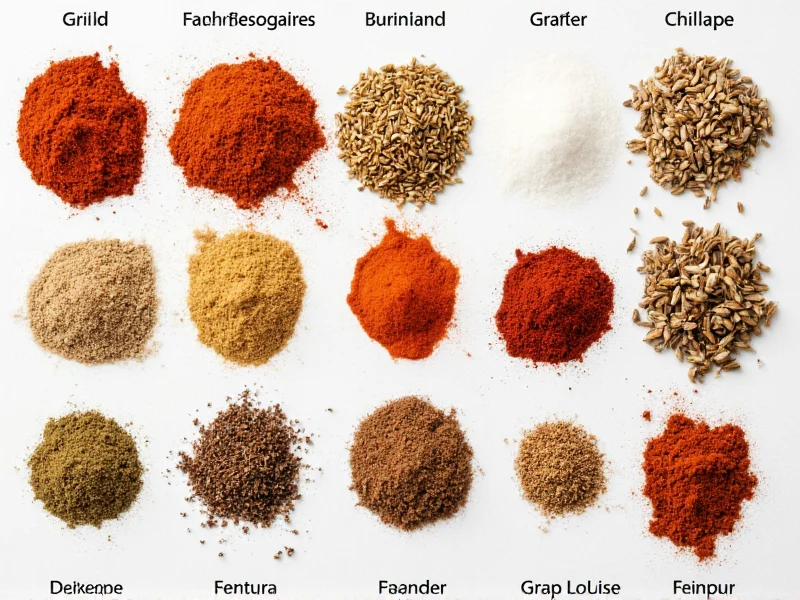Understanding what the table of spice concept entails reveals a growing trend in experiential dining. Unlike standard restaurants that simply serve pre-seasoned dishes, venues featuring the table of spice arrangement prioritize guest involvement in flavor development. This practice transforms passive dining into an educational journey through global spice traditions.
Origins of the Interactive Spice Experience
The modern interpretation of the table of spice dining concept emerged from traditional Southeast Asian eating customs. In countries like Thailand and Vietnam, it's customary to provide condiments and spice blends alongside meals, allowing diners to adjust heat levels and flavor profiles. Forward-thinking restaurateurs formalized this practice into the structured table of spice presentation we see today.
True authentic table of spice restaurants carefully source their ingredients from specific regions, ensuring each component tells a story. For example, a single establishment might feature Sumatran pepper alongside Madagascan vanilla, creating opportunities for guests to explore terroir-specific flavor characteristics.
Components of a Professional Spice Table
A properly curated restaurant table of spice setup contains more than just basic seasonings. The most effective implementations include:
| Spice Component | Purpose | Common Pairings |
|---|---|---|
| Signature spice blends | Regional flavor foundations | Rendang spice with Indonesian dishes |
| Single-origin peppers | Heat customization | Bhut jolokia for extreme heat seekers |
| Aromatic enhancers | Complexity boosters | Lemongrass powder with seafood |
| Finishing salts | Texture and final seasoning | Himalayan pink salt on grilled meats |
Benefits of the Spice Table Approach
Restaurants implementing the proper table of spice service model report several advantages over conventional dining experiences. Most notably, they observe increased guest engagement and longer table turnover times as diners experiment with flavor combinations. This interactive element particularly appeals to millennial and Gen Z diners seeking authentic culinary experiences with table of spice customization.
From an educational perspective, the table of spice concept explained serves as an accessible introduction to global spice traditions. Knowledgeable staff can guide guests through each component's origin and traditional uses, transforming meals into cultural experiences. This approach aligns perfectly with the growing consumer demand for transparent food sourcing with table of spice elements.
Implementing the Concept at Home
You don't need a professional kitchen to enjoy elements of the table of spice restaurant experience at home. Creating your own simplified version requires just five essential components:
- A small wooden tray or ceramic dish for presentation
- Three regional spice blends (e.g., za'atar, garam masala, Chinese five-spice)
- Single-origin finishing salts
- Specialty peppers in varying heat levels
- Instruction cards explaining each component's origin and best uses
This DIY table of spice setup for home brings restaurant-quality customization to personal dining experiences. Start with small quantities of each component to avoid waste, and rotate selections seasonally to maintain interest.
Finding Authentic Table of Spice Experiences
When searching for restaurants with table of spice service, look beyond marketing claims to verify authenticity. Genuine implementations will feature:
- Spice containers with origin information and harvest dates
- Staff trained in spice education, not just service
- Menu descriptions connecting dishes to specific spice components
- Regular spice rotation based on seasonality
The most authentic table of spice dining establishments treat their spice collections as living exhibits, often partnering directly with growers. This commitment to quality distinguishes true practitioners of the concept from those merely using it as a decorative gimmick.
What exactly is the table of spice concept in restaurants?
The table of spice concept features curated spice collections placed directly on dining tables, allowing guests to customize flavors according to personal preference. Authentic implementations include region-specific spice blends, single-origin peppers, aromatic enhancers, and finishing salts with detailed information about each component's origin and traditional uses.
How does the table of spice enhance the dining experience?
The table of spice transforms dining from passive consumption to active participation. It allows guests to adjust heat levels, enhance specific flavor notes, and learn about global spice traditions. This interactive approach creates memorable experiences, encourages culinary exploration, and accommodates diverse palates at the same table.
What should I look for to identify authentic table of spice service?
Authentic table of spice service includes containers with harvest dates and origin information, staff knowledgeable about spice traditions, menu descriptions connecting dishes to specific spices, and seasonal rotation of components. Avoid establishments where the spice collection appears decorative rather than functional or educational.
Can I create a table of spice experience at home?
Yes, creating a DIY table of spice setup requires a presentation tray, three regional spice blends, finishing salts, specialty peppers, and instruction cards explaining each component. Start with small quantities and rotate selections seasonally. Focus on quality over quantity, sourcing from specialty spice merchants for the most authentic experience.
Which cuisines most commonly feature the table of spice concept?
Southeast Asian and Indian cuisines most commonly implement the table of spice concept, as these culinary traditions emphasize customizable heat levels and flavor profiles. However, the concept has expanded to include Middle Eastern, Latin American, and even fusion restaurants seeking to offer interactive dining experiences.











 浙公网安备
33010002000092号
浙公网安备
33010002000092号 浙B2-20120091-4
浙B2-20120091-4